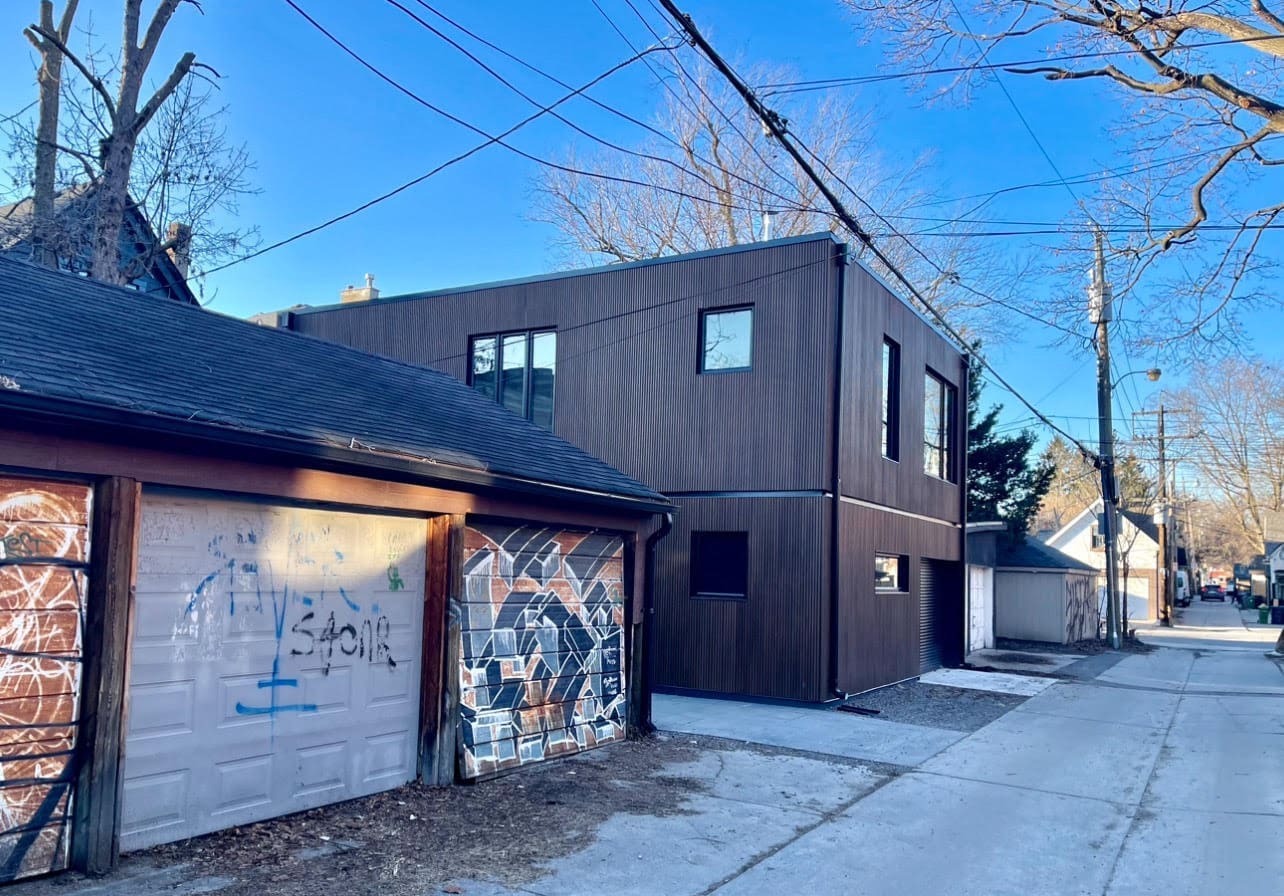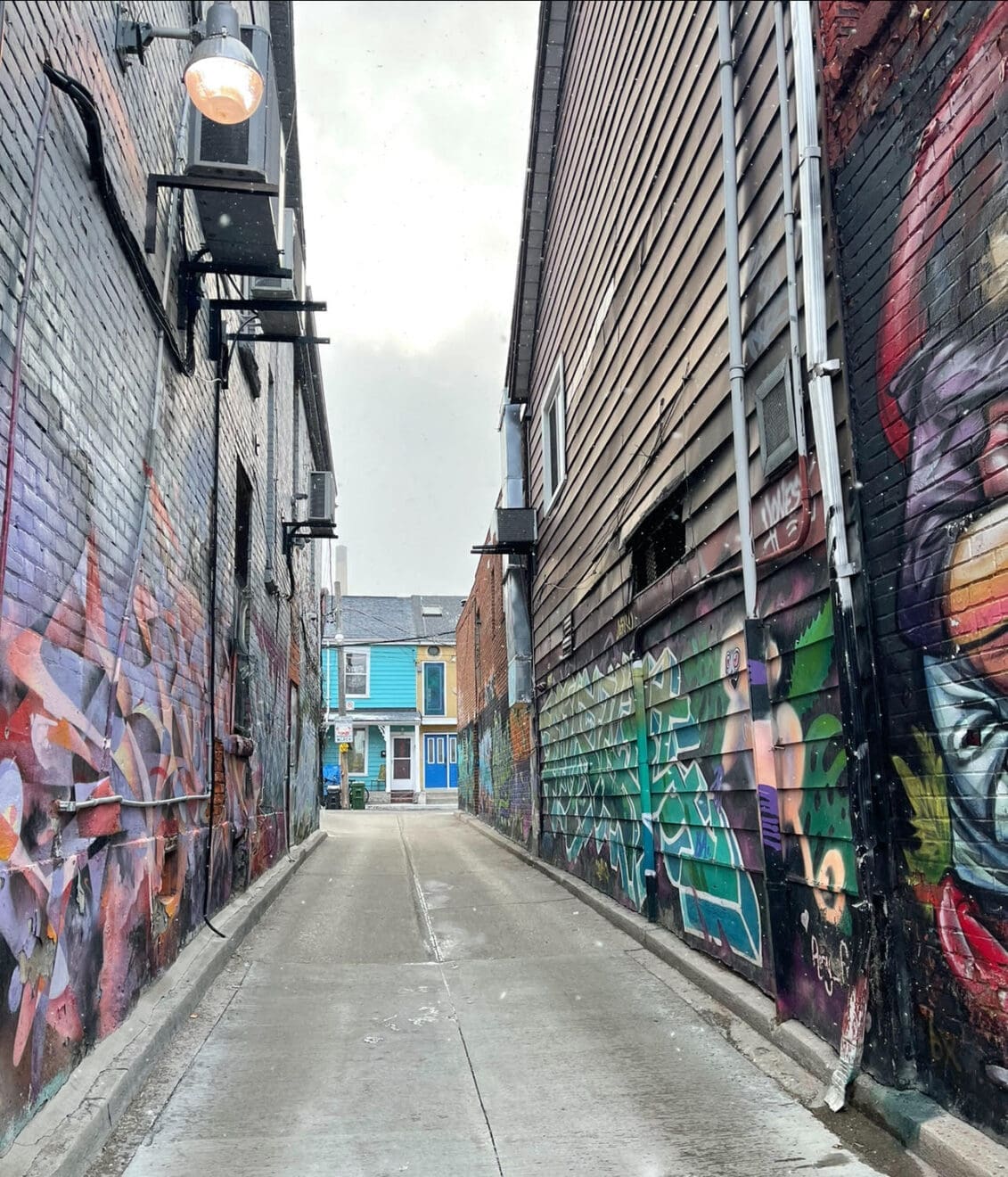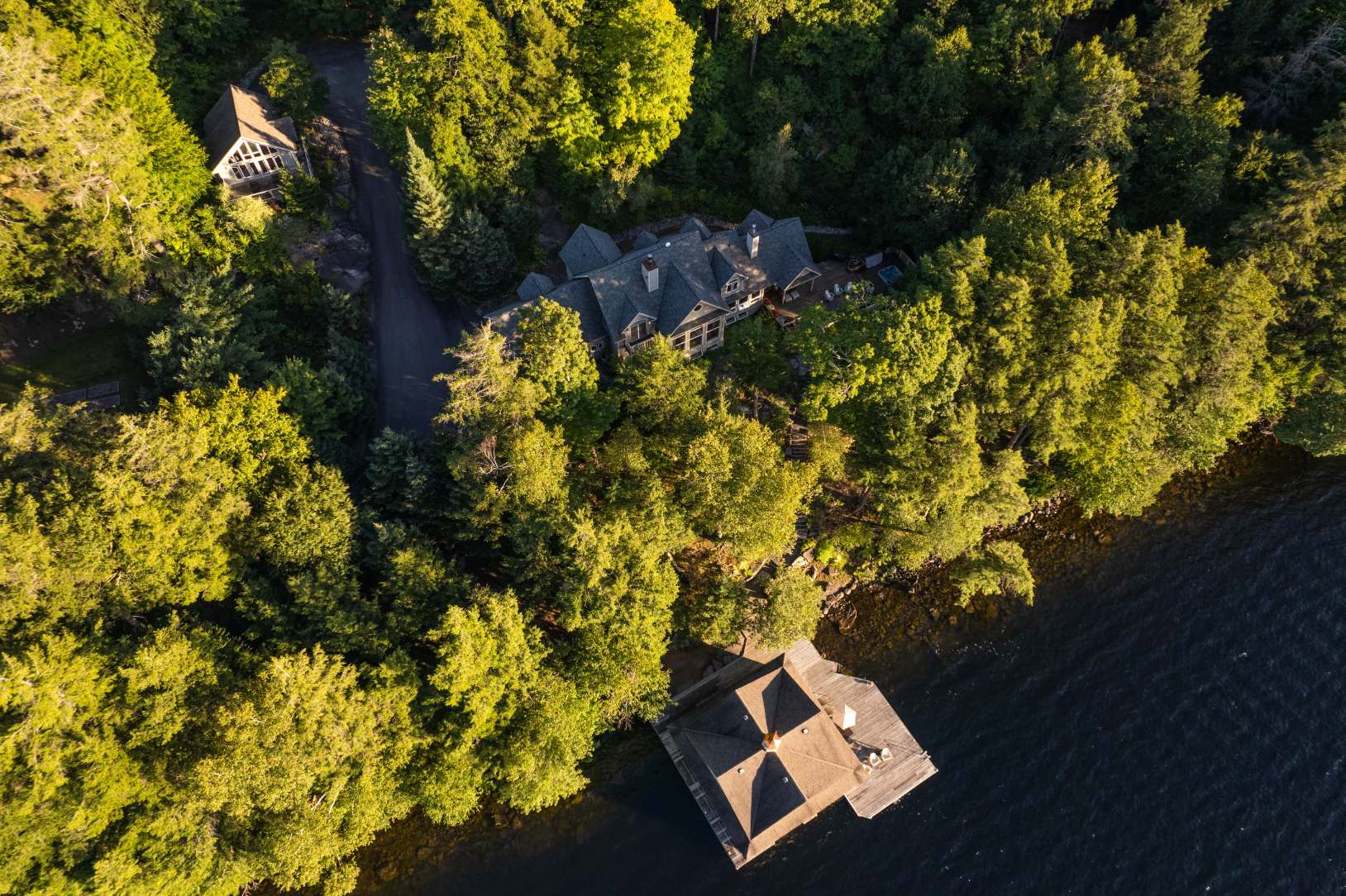Laneway houses are increasingly popular in Toronto due to practical and societal shifts in urban living as cities densify. Originally known as coach houses or backyard cottages, they were traditionally used for storing vehicles or accommodating staff. Today, they represent a smart investment in desirable neighbourhoods for several reasons. With nearly 2,500 laneways across the city, this aspect of urban development deserves greater attention in Toronto’s maturing urban landscape, where proper densification can foster thriving communities.
Want to learn more about Toronto’s finest communities? Read my neighbourhood guides here.
The Investor Appeal of Laneway Homes
Toronto boasts a robust rental market, and laneway houses offer homeowners a relatively affordable means to increase housing supply while potentially offsetting mortgage payments or turning a profit with substantial rental income. They enable greater density in low-rise residential neighbourhoods without significantly altering their character. This is especially attractive as Toronto accommodates population growth and urbanization while preserving the charm of leafy established precincts.
How Laneway Homes Benefit Toronto’s Architectural Landscape
Laneway houses exemplify sustainable urban development by maximizing existing infrastructure and land efficiency. They promote transit-oriented development and reduce reliance on car-centric living, fostering walkable neighbourhoods. This option is crucial amidst Toronto’s affordability crisis, driven by soaring home prices and limited affordable housing. It supports sustainable population density growth and enhances neighbourhood vitality.
Discover Toronto’s rich architectural landscape in this blog right here.
Do Laneway Homes Increase Home Values?
Having a laneway house, whether creating one or converting an accessory building into one, can potentially increase the overall value of your property. This additional unit appeals to buyers seeking more space or income potential, and is attractive to renters looking for alternatives to condos or apartments in larger buildings. Laneway houses are typically smaller and located on existing lots, allowing for relatively quick construction compared to larger developments. This provides housing options for both renters and buyers, enabling the generation of income sooner.

Other Benefits of Building a Laneway Home in Toronto
Furthermore, laneway houses offer flexibility; owners can opt not to stay on as landlords and may choose to sever and re-deed the lots, selling them to new owners.
If your lifestyle changes and you no longer need as much space, a laneway house offers flexibility. You could downsize into the smaller house and rent out your main house, leveraging your property to better suit your long-term needs. In neighbourhoods with aging populations, there’s increasing demand for smaller, more accessible housing options from those looking to downsize while staying in the area. Laneway houses can accommodate this need, as well as facilitate multigenerational living arrangements or provide housing for adult children within the family.
Whether you have questions about buying, selling, or cultivating your own life of luxury, read these posts next:
- Smart Home Investments for a Refined Lifestyle
- Lasting Quality in Toronto Homes: Features to Look For
- Selling Your Home in the Digital Age: How the Market Has Changed
The City of Toronto and Laneway Homes
Municipal policies in Toronto have increasingly supported laneway housing developments, with initiatives and incentives from the city government aimed at streamlining the approval process and encouraging homeowners to pursue this option. The design flexibility of these smaller houses allows for creative and innovative architectural solutions that blend modern amenities with traditional neighbourhood aesthetics, making them appealing to a diverse group of sophisticated renters and investors.
Learn more about Toronto’s Laneway Suites Program here.
Laneway houses can either be sold separately from the original property or maintained under the same deed and rented out. The evolution of this housing type faced challenges in obtaining city services for these rear areas, which took several years to overcome. Ultimately, creative advocates highlighted the benefits outweighing the drawbacks, leading to their acceptance. A notable example that contributed to this progress was a small development in the Summerhill neighbourhood in the early 90s, where a pair of architects designed a clever home on an tiny parcel of land for themselves. You can learn more about the project here.
As policies continue to evolve and public awareness increases, laneway houses are likely to play a significant role in Toronto future housing landscape.

Considerations when Building a Laneway Home
When considering adding an additional dwelling structure to your property, it’s important to weigh the pros and cons. Zoning and building regulations should be thoroughly reviewed with an architect before proceeding with any additions or property splits. Ensuring compliance with local zoning bylaws and building regulations is essential. Local laneway housing advisors can be easily found through a web search and can provide analyses and reports to assess the feasibility and scale of such projects.
Different districts may have specific requirements regarding light, size, setbacks, density, and permitted uses (residential, commercial, industrial). Your architect can assist in obtaining necessary permits and approvals from the city, and a professional land survey may be required to accurately define the boundaries of each new unit or parcel. Subdivision approval from the city planning department is often necessary to legally divide the property into separate titles if you intend to sell the new dwelling.
Engaging with neighbours and the local community early in the planning process can help alleviate concerns, gather feedback, and generate ideas to improve your project. Hosting informal meetings or soliciting input through community forums can provide valuable insights and build support for your initiative. Additionally, it’s important to assess the potential impact of adding a laneway house on parking availability and traffic flow in your neighbourhood. Implementing adequate parking solutions or promoting alternative transportation options can help mitigate these concerns and assure residents that the project will contribute positively to the neighbourhood, rather than negatively affecting property values.
Curious about sustainable living and architecture? Read my blog about sustainability in real estate right here.
The Legal Implications of a Laneway Suite
It would also be prudent to consult with a real estate lawyer to draft the necessary legal documents to split the deed, if required. They can provide valuable insights into proper title registration at the registry office and advise on the subdivision plans needed for formal registration with the land registrar. Additionally, they can offer guidance on any tax implications, including property transfer taxes, capital gains, and adjustments to property assessments.
Once the architectural work is completed and the project is submitted for municipal approvals, additional applications will be necessary to ensure that each new unit or parcel has access to essential services such as water, sewer, electricity, and natural gas. Coordination with utility providers will be required to establish these connections, as well as with the city for water and sewage connections.

What to Know About Buying and Selling a Home with a Laneway Suite
Buying or selling a property with a laneway home offers several benefits and can hold advantages over other properties in neighbourhoods where this housing type is well-suited. The instant income potential of laneway homes is a significant advantage for sellers. Future owners find the appeal of having tenants at arm’s length rather than sharing the main house or having them on another floor quite attractive. Laneway homes can also command higher rent due to their self-contained nature, offsetting mortgage payments and other homeownership costs from the outset.
Moreover, laneway homes offer flexibility for future living arrangements. As noted earlier, homeowners can use them beyond rental income as spaces for family members, home offices, studios, or to adapt to evolving lifestyle changes. They also diversify one’s investment portfolio by providing exposure to the rental market, aiding in wealth accumulation and income stability. This feature can make laneway homes appealing to mortgage lenders if financing is required.
Do you still have questions about buying or selling a home in Toronto? Here are some additional articles you might be interested in:
- The Complete Guide to Selling an Older Home in Toronto
- Is it Wrong to Like Older Toronto Condo Buildings? Or Are they Actually Better?
- Don’t Be Unduly Swayed by Glitzy Condorama!
Additionally, laneway homes are typically located in desirable urban neighbourhoods close to amenities, public transport, cultural attractions, and potentially places of work. Homeowners can increase their equity by selling off the laneway home while retaining the main house after severance, thereby reducing their loan burden.
These homes can be particularly appealing to young and motivated buyers in denser neighbourhoods where the sellers of these properties can attract a broader pool of buyers specifically looking for the benefits associated with owning a second property. A laneway house can increase the marketability and perceived value of the property, potentially leading to a quicker sale and competitive offers. In neighbourhoods where they are becoming more commonplace, owning a property with this type of improvement can provide a competitive advantage.
Considering all these factors, it’s important to give proper consideration to laneway houses, as they are not the typical housing option for everyone. Sometimes, breaking away from conventional thinking can lead to significant rewards for those willing to take the risk. A laneway house represents a calculated risk that, in the right situations, can be a safe and rewarding investment.
Are you looking for advice on buying, selling, or building a laneway suite? I’d be happy to help! Reach out directly by calling 416-824-1242, emailing robert@lifeofluxury.ca, I would be happy to guide you!

Guiding Your Experience
Learn more about how I work with you to create unique strategies that help make your dream lifestyle your actual lifestyle.





